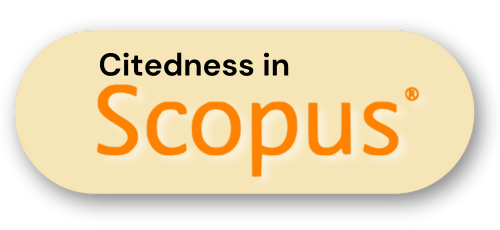Optimizing HyFlex Learning: Pedagogical, Technological, and Policy Perspectives
DOI:
https://doi.org/10.61194/education.v3i1.700Keywords:
HyFlex Learning, Hybrid-Flexible Education, Student Engagement, Digital Learning Environments, Faculty Readiness, Educational Technology Policy, Blended Learning StrategiesAbstract
This narrative review explores the implementation, readiness, and impact of HyFlex (Hybrid-Flexible) learning models in higher education, a format increasingly adopted to support student-centered and technologically enriched learning. The objective is to synthesize empirical and conceptual literature to assess the model’s effectiveness and identify persistent challenges. Data was collected from Scopus, ERIC, Web of Science, and Google Scholar, using key phrases such as "HyFlex learning," "implementation challenges," and "student engagement in hybrid-flexible classrooms." Inclusion criteria focused on peer-reviewed studies published within the last five years. The review finds that successful HyFlex implementation depends on robust digital infrastructure, faculty adaptability, and targeted instructional strategies that support both in-person and online learners. Studies demonstrate increased student satisfaction, participation, and academic performance when these conditions are met. However, systemic issues such as unequal access to digital tools, limited institutional support, and insufficient policy frameworks remain significant barriers. Literature consistently suggests that faculty training, real-time feedback integration, and supportive policies are essential to optimizing the model’s impact. The study concludes that while HyFlex is a promising innovation, its success requires coordinated structural, technological, and pedagogical interventions. This paper advocates for stronger institutional and governmental policies, cross-unit collaboration, and ongoing research into student experience and faculty development to enhance the efficacy and equity of HyFlex learning environments.
References
Abbas, A., Rincón, G., Wang, L., & Siddiqui, M. (2023). Investigating the impact of technostress on perceived hybrid learning environment and academic performance. The Electronic Journal of E-Learning, 21(4), 382-393. https://doi.org/10.34190/ejel.21.4.3084 DOI: https://doi.org/10.34190/ejel.21.4.3084
Amirova, A., Zhumabayeva, A., Жунусбекова, А., Arenova, A., & Nygymanova, N. (2024). Students' perspectives of a hybrid learning system in Kazakhstani higher education: a case study. Journal of Education and E-Learning Research, 11(2), 302-310. https://doi.org/10.20448/jeelr.v11i2.5546 DOI: https://doi.org/10.20448/jeelr.v11i2.5546
Amirova, A., Zhumabayeva, A., Жунусбекова, А., Kalbergenova, S., Nygymanova, N., & Arenova, A. (2023). Effect of using HyFlex technology learning on preservice teachers' success and attitudes. International Journal of Education in Mathematics Science and Technology, 11(3), 623-642. https://doi.org/10.46328/ijemst.3309 DOI: https://doi.org/10.46328/ijemst.3309
Baker, S., Watkinson, M., Honeyman, F., Mowll, J., & Tyulkina, S. (2024). Rethinking student engagement for ‘HyFlex’ teaching and learning in post-compulsory settings: acknowledging flexibility and agency needed for unplanned events. International Journal of Lifelong Education, 43(4), 432-447. https://doi.org/10.1080/02601370.2024.2359595 DOI: https://doi.org/10.1080/02601370.2024.2359595
Cumming, T., Gilanyi, L., & Han, C. (2024). HyFlex delivery mode in a postgraduate course: instructor and student perspectives. Discover Education, 3(1). https://doi.org/10.1007/s44217-024-00110-0 DOI: https://doi.org/10.1007/s44217-024-00110-0
Detyna, M., Sanchez-Pizani, R., Giampietro, V., Dommett, E., & Dyer, K. (2022). Hybrid flexible (HyFlex) teaching and learning: climbing the mountain of implementation challenges for synchronous online and face-to-face seminars during a pandemic. Learning Environments Research, 26(1), 145-159. https://doi.org/10.1007/s10984-022-09408-y DOI: https://doi.org/10.1007/s10984-022-09408-y
Detyna, M. & Koch, M. (2023). An overview of student perceptions of hybrid flexible learning at a London HEI. Journal of Interactive Media in Education, 2023(1). https://doi.org/10.5334/jime.784 DOI: https://doi.org/10.5334/jime.784
Do graduate courses in a HyFlex mode foster emotional, cognitive and behavioral engagement? A consideration. (2024). Journal of Applied Learning & Teaching, 7(1). https://doi.org/10.37074/jalt.2024.7.1.18 DOI: https://doi.org/10.37074/jalt.2024.7.1.18
Eduljee, N., Murphy, L., Emigh-Guy, M., & Croteau, K. (2023). Student perceptions about HyFlex/hybrid delivery of courses during the COVID-19 pandemic. College Teaching, 72(4), 346-357. https://doi.org/10.1080/87567555.2023.2208815 DOI: https://doi.org/10.1080/87567555.2023.2208815
Han, J., Yang, Y., Li, Y., & Ren, B. (2022). Students’ responses to a HyFlex course: a case study in the educational technology setting. 69-75. https://doi.org/10.1145/3524383.3524394 DOI: https://doi.org/10.1145/3524383.3524394
Howell, E. (2022). HyFlex model of higher education: understanding the promise of flexibility. On the Horizon the International Journal of Learning Futures, 30(4), 173-181. https://doi.org/10.1108/oth-04-2022-0019 DOI: https://doi.org/10.1108/OTH-04-2022-0019
Jayo, R., Ayala, A., Muñoz-Vilela, A., Ramírez, E., & Orbe, S. (2023). Analysis of the implementation of the HyFlex model. Salud Ciencia Y Tecnología, 3, 367. https://doi.org/10.56294/saludcyt2023367 DOI: https://doi.org/10.56294/saludcyt2023367
Li, K., Wong, B., Kwan, R., Chan, H., Wu, M., & Cheung, S. (2023). Evaluation of hybrid learning and teaching practices: the perspective of academics. Sustainability, 15(8), 6780. https://doi.org/10.3390/su15086780 DOI: https://doi.org/10.3390/su15086780
Mineshima-Lowe, D., Mihai, A., Bourdon, M., Pears, L., Bijsmans, P., Hadjipieris, P., … & Lightfoot, S. (2023). HyFlex and hybrid teaching and learning in higher education: evolving discussions in the post-pandemic era. European Political Science. https://doi.org/10.1057/s41304-023-00447-4 DOI: https://doi.org/10.1057/s41304-023-00447-4
Moreira, M., Aguilar, A., & Gómez, S. (2022). HyFlex: enseñar y aprender de modo híbrido y flexible en la educación superior. Ried Revista Iberoamericana De Educación a Distancia, 26(1), 141-161. https://doi.org/10.5944/ried.26.1.34023 DOI: https://doi.org/10.5944/ried.26.1.34023
Nweke, L., Anthony, B., Mba, G., & Nwigwe, E. (2022). Investigating the effectiveness of a HyFlex cyber security training in a developing country: a case study. Education and Information Technologies, 27(7), 10107-10133. https://doi.org/10.1007/s10639-022-11038-z DOI: https://doi.org/10.1007/s10639-022-11038-z
Oktariyani, O., Dewanti, R., & Rasyid, Y. (2024). Prototype of English reading teaching materials based on the HyFlex model. International Journal of Advanced and Applied Sciences, 11(11), 118-129. https://doi.org/10.21833/ijaas.2024.11.013 DOI: https://doi.org/10.21833/ijaas.2024.11.013
Okoye, K., Rodriguez-Tort, J., Escamilla, J., & Hosseini, S. (2021). Technology-mediated teaching and learning process: a conceptual study of educators’ response amidst the COVID-19 pandemic. Education and Information Technologies, 26(6), 7225-7257. https://doi.org/10.1007/s10639-021-10527-x DOI: https://doi.org/10.1007/s10639-021-10527-x
Romero-Hall, E. & Ripine, C. (2021). Hybrid flexible instruction: exploring faculty preparedness. Online Learning, 25(3). https://doi.org/10.24059/olj.v25i3.2426 DOI: https://doi.org/10.24059/olj.v25i3.2426
Villanueva, E. & Caalim, J. (2024). Development and validation of a questionnaire to assess students’ perception of HyFlex learning modality. Recoletos Multidisciplinary Research Journal, 12(2), 43-60. https://doi.org/10.32871/rmrj2412.02.04 DOI: https://doi.org/10.32871/rmrj2412.02.04
Yingyi, X., Razak, R., & Halili, S. (2024). Factors affecting learner engagement in HyFlex learning environments. International Journal of Evaluation and Research in Education (IJERE), 13(5), 3164. https://doi.org/10.11591/ijere.v13i5.28998 DOI: https://doi.org/10.11591/ijere.v13i5.28998






